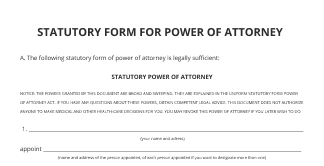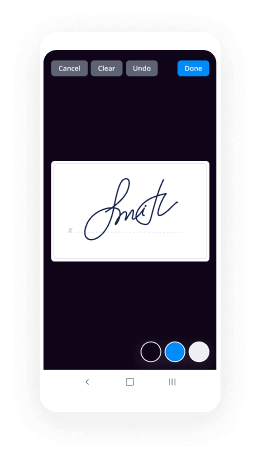Signed Indemnity Agreement Made Easy
Do more online with a globally-trusted eSignature platform
Outstanding signing experience
Reliable reporting and analytics
Mobile eSigning in person and remotely
Industry regulations and compliance
Signed indemnity agreement, quicker than ever before
Helpful eSignature extensions
See airSlate SignNow eSignatures in action
airSlate SignNow solutions for better efficiency
Our user reviews speak for themselves






Why choose airSlate SignNow
-
Free 7-day trial. Choose the plan you need and try it risk-free.
-
Honest pricing for full-featured plans. airSlate SignNow offers subscription plans with no overages or hidden fees at renewal.
-
Enterprise-grade security. airSlate SignNow helps you comply with global security standards.

Your step-by-step guide — signed indemnity agreement
Adopting airSlate SignNow’s electronic signature any company can enhance signature workflows and sign online in real-time, giving a better experience to customers and staff members. Use signed indemnity agreement in a few simple actions. Our mobile-first apps make operating on the run possible, even while off-line! eSign contracts from anywhere in the world and close trades in less time.
How to fill out and sign a signed indemnity agreement
- Log on to your airSlate SignNow profile.
- Locate your record within your folders or import a new one.
- Open the document and make edits using the Tools list.
- Drag & drop fillable boxes, add text and sign it.
- Include several signees using their emails and set the signing sequence.
- Choose which users will receive an executed version.
- Use Advanced Options to restrict access to the template add an expiration date.
- Click Save and Close when done.
Furthermore, there are more advanced features open for signed indemnity agreement. List users to your collaborative digital workplace, browse teams, and monitor cooperation. Millions of people across the US and Europe concur that a solution that brings people together in one cohesive workspace, is the thing that enterprises need to keep workflows performing efficiently. The airSlate SignNow REST API allows you to embed eSignatures into your app, website, CRM or cloud storage. Try out airSlate SignNow and get faster, smoother and overall more effective eSignature workflows!
How it works
airSlate SignNow features that users love
See exceptional results signed indemnity agreement
Get legally-binding signatures now!
FAQs signed indemnity agreement
-
What is the indemnity agreement?
Indemnity is considered to be a contractual agreement between two parties whereby one party agrees to pay for potential losses or damages caused by another party. ... With indemnity, the insurer indemnifies the policyholder\u2014that is, promises to make whole the individual or business for any covered loss. -
How does an indemnity work?
Indemnity refers in some contexts as compensation for loss or damage from the actions of another party. Indemnity can also refer to a legal exemption from loss or damages, as in the case of an indemnity clause in a contract, in which one party agrees to take the liability for loss or damage from another party. -
Should you sign a hold harmless agreement?
By signing a broad form hold harmless agreement you are possibly exposing your company to uninsurable risk. Contractual Liability Coverage for sole or gross negligent acts of your client is excluded is y most liability policies. ... As with all contracts, it is best to have legal counsel review prior to signing. -
What happens when you indemnify someone?
To indemnify someone is to absolve that person from responsibility for damage or loss arising from a transaction. Indemnification is the act of not being held liable for or being protected from harm, loss, or damages, by shifting the liability to another party. -
What is the purpose of an indemnification agreement?
An indemnity agreement is a contract that 'holds a business or company harmless' for any burden, loss, or damage. An indemnity agreement also ensures proper compensation is available for such loss or damage. -
What does the legal term indemnify mean?
Indemnify Law and Legal Definition. To indemnify means to reimburse another for a loss suffered because of a third party's or one's own act or default. ... The right to indemnity and the duty to indemnify commonly comes from a contractual agreement, which generally protects against liability, loss, or damage. -
How do you get an indemnity bond?
To execute or redeem an indemnity bond, the claimant or principal must comply with the terms of the indemnity bond. In most cases, the claimant must provide written notice that the obligor has failed to perform under the contract, and the claimant is looking to the guarantor or issuer of the indemnity bond for payment.
What active users are saying — signed indemnity agreement
Signed indemnity agreement
hi friends i am imran ali today my topic of discussion is contract of indemnity but before moving towards the topic let me remind you please don't forget to like and subscribe my youtube channel introduction the word indemnity means security or protection against a financial liability it typically occurs in the form of contractual agreement made between the parties in which one party agrees to pay for losses or damages suffered by the other party definition of indemnity according to black's law dictionary an undertaking whereby one agrees to indemnify another upon the occurrence of anticipated laws according to contract act section 124 a contract by which one party promises to save other from laws caused to him by the conduct of the promiser himself or by the conduct of any other person is called a contract of indemnity illustration and objective a contractor indemnify b against the consequences of any proceedings which c may take against b in respect of a certain sum of one thousand dollars this is a contract of indemnity section 124 deals with one particular kind of indemnity which arises from a promise made by an indemnifier to save the indemnified from the loss caused to him by the conduct of the indemnifier himself or by the conduct of any other person but doesn't deal with those clauses of cases where the indemnity arises from the loss caused by events or accidents which do not depend upon the conduct of indemnifier or any other person the objective of entering into a contract of indemnity is to protect the promises against unanticipated losses parties involved in a contract of indemnity number one indemnifier the person who promises to make good the loss is called indemnifier or promiser number two indemnified the person whose loss is said to be made good is called the indemnity holder or indemnified kinds of indemnity a promise to indemnity may be either expressed or implied number one express and indemnity is expressed when it is made by express promise between the parties number two implied an indemnity is implied when it has been inferred from the circumstances of a particular case essentials of contract of indemnity number one parties to a contract there must be two parties namely promiser or indemnifier and the promising or indemnit indemnity holder number two protection of laws a contract of indemnity is entered for the purpose of protecting the promises from the loss the loss may be caused due to the conduct of the promiser or any other person number three express or implied the contract of indemnity may be expressed or implied number 4 essentials of a valid contract a contract of indemnity is a special kind of contract the principles of the general law of contract contained in section 1 to 75 of the contract act 1872 are applicable to them therefore it must possesses all the essentials of a valid contract rights of indemnity holder a right to indemnity arises as soon as the party indemnified suffers a loss or anything happen against which he has been indemnified as per section 125 of the contract act 1872 the following rights are available to the promises or indemnity holder against the promiser or indemnifier provided he has acted within the scope of his authority number one right to claim damages an indemnity holder is entitled to claim all damages which he may have compelled to pay in any suit in respect of any matter to which the promise of indemnity applies number 2 right to recover all cost an indemnity holder is entitled to recover all costs reasonably incurred in resisting or reducing or ascertaining the claim but the party indemnified cannot recover cost when he has not acted as prudent men in defending the action against him or has not been authorized by the indemnity fire to defend the suit number three right to recover all sims an indemnity holder also has the right to recover from the indemnity indemnifier all sums which he may have paid under the terms of any compromise of any such suit if the compromise was not contrary to the orders of the promiser and was one which it would have been prudent for the promises to make it in the absence of any contract of indemnity or if the promiser authorized him to compromise the suit contract of guarantee aside from indemnity contracts the contract act likewise governs contract of guarantee these contracts may seem like indemnity contracts yet there are some contrast between them in guarantee contracts one party contracts to perform a promise or discharge a liability of a third party this will happen in case the party fails to discharge its obligation and defaults the person who gives the guarantee is the surety on the other hand the person for whom the surety gives the guarantee is the principal data similarly the person to whom he gives such guarantee is the creditor difference between indemnity and guarantee there are some significant differences between the contract of indemnity and guarantee first one is that in indemnity there are just two parties whereas in contracts of guarantee there are three parties second one is that in contract of guarantee there is existing debt or duty which is guaranteed by surety to discharge whereas in indemnity contracts liability is contingent and it may not arise at all third one is that an indemnifier may act with how the debtors behest whereas surety consistently sits tight for the principal principal data's request furthermore indemnifiers liability towards the indemnity holder is primary where a surety's liability is secondary in guarantee so that's all for today i hope you will like this video and find it beneficial in your academic studies if you have any sort of curious questions in your mind please comment below and don't forget to like and subscribe my youtube channel till next video take care allah office
Show more











































